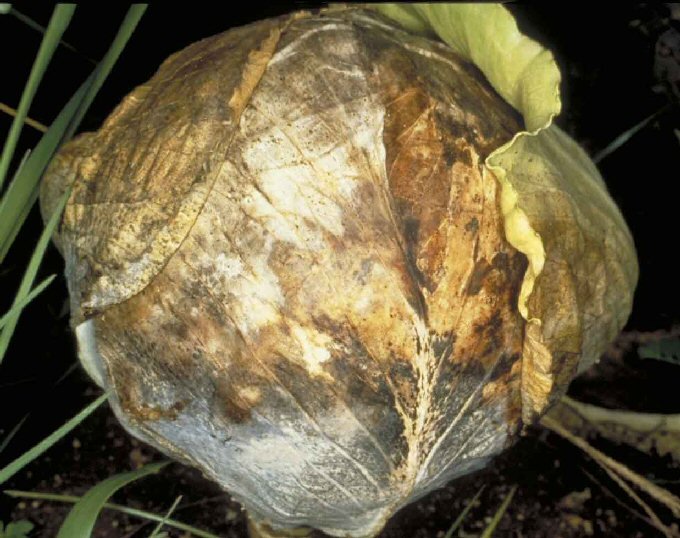(Pythium spp., Rhizoctonia solani, Fusarium spp.)
Credits:Biovison-Infonet

(c) McKenzie, LandCare Ltd., Courtesy of EcoPort

(c) Juergen Kranz, Courtesy of EcoPort
In crucifers, several fungi (e.g. Pythium spp., Rhizoctonia solani, Fusarium spp.) can cause damping-off diseases.
Characteristic is wirestem of seedlings caused by Rhizoctonia solani in the seedbed, bottom rot and head rot in the field, and storage and root rot of horseradish, radish, rutabaga and turnip.
Damping-off diseases are favoured by cool, wet soil conditions.
What to do:
- Use certified disease-free seeds. If using own seed, treat seeds with hot-water.
- Practise proper irrigation, avoid planting in wet, cold soils
- Plant on raised beds to reduce moisture content in the root zone and provide the appropriate drainage in the field to prevent waterlogged conditions
- Practise crop rotation: seedbeds and production fields should not have had crucifers for at least 3 years. All seedlings with wirestem symptoms should be discarded. During cultivation, take care to avoid throwing soil into plant heads.